- Home
- slideshows
- miscellaneous
- 32 of the most scientifically sound things you can do right now to reduce your risk of developing cancer
32 of the most scientifically sound things you can do right now to reduce your risk of developing cancer
The number one thing you can do to reduce your risk of developing cancer is straightforward and well known: stop smoking, or don't start.

Less is known about the cancer risks associated with vaping, but early studies suggest it is not an ideal replacement for smokers.

E-cigarettes haven't been around long enough for scientists to say much conclusively yet about whether they have any associations with cancer risk.
But high-voltage e-cigarette vapors can contain formaldehyde gas, a known carcinogen, as well as cancer-causing benzene.
Switching over from regular cigarettes to e-cigarettes can reduce a smoker's exposure to toxins and some potentially cancer-causing compounds, but studies in animals suggest that long-term e-cigarette use might still increase cancer risk.
After curbing smoking, the second most important thing to do to prevent cancer is maintain a healthy weight.
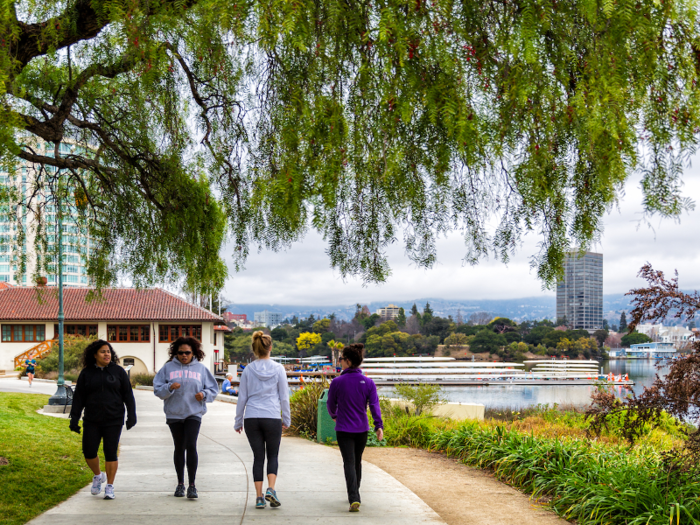
According to the World Cancer Research Fund, being overweight or obese increases your risk of developing 11 different kinds of cancer: colon, throat, pancreatic, liver, kidney, breast (post-menopause), stomach, womb, ovarian, advanced prostate, and gallbladder.
One reason for this is that our fat cells release hormones like estrogen that can up your odds of developing certain cancers, like breast and womb cancer.
One easy way to assess whether your weight may put you at risk is to monitor your waistline. Too much belly fat is linked to higher cancer risk.

Fat around our mid-sections is extra dangerous. Scientists think part of the reason for this is that a lower layer of our stomach fat, called visceral fat, releases hefty doses of a protein that helps tumors grow. The protein can turn a non-cancerous cell into a cancerous one.
"It's abdominal obesity, and even more specifically, levels of a protein called fibroblast growth factor-2, that may be a better indicator of the risk of cells becoming cancerous," pharmacologist and toxicologist Jamie Bernard said in 2017, when she released results of a study on how visceral fat tissue contributed to tumor growth in mice.
Fortunately, many of the other foods, drinks, and activities that follow on this list can help reduce your cancer risk while also making it easier for you maintain a healthy weight.
Getting enough sleep can help.

Routinely not getting enough sleep depletes your body's stores of "natural killer cells": the white blood cells that can annihilate tumors. The amount of sleep that's sufficient for optimal health varies from person to person, but for most adults, it's 7 to 8 hours per night.
According to sleep expert and neuroscientist Matthew Walker, a single 4- or 5-hour night of sleep could lower your body's "natural killer" cell count by around 70%.
We have good evidence that a chronic sleep debt is carcinogenic. Sleep deprivation is now being implicated in cases of colon cancer, breast cancer, and prostate cancer.
In addition to making sure you get enough sleep, the time when you grab shut-eye is important. A wacky sleep schedule may increase cancer risk, since it causes melatonin to be suppressed.
No surprise then that the World Health Organization says night shift work is a "probable carcinogen."
Another great way to boost your odds against cancer: Get moving.

Exercise helps keep your hormone levels healthy and your immune system robust, which are both great cancer defense mechanisms.
Getting your sweat on regularly is linked with a 24% lower risk of colon cancer, 12% lower risk of breast cancer in women, and a 20% lower risk of uterus cancer, when cancer rates in regular exercisers are compared to couch potatoes.
Specifically, women who work out can lower their estrogen levels. That helps reduce cancer risk, since too much estrogen can encourage breast cells to divide more frequently. Likewise, staying active can keep insulin levels in the body in check, which also helps lower one's chances of getting cancer.
A 2016 study of more than 1.4 million people in the US and Europe found that people who exercised regularly cut their risk of developing 13 different kinds of cancer. People who worked out the most (the top 10% of exercisers) had a 20% lower risk of developing those cancers (esophageal adenocarcinoma, liver, lung, kidney, gastric cardia, endometrium, and myeloid leukemia) than the bottom 10% of exercisers the group.
Regular movement also helps you digest your food more quickly and can reduce inflammation in the gut, which means that any potentially cancer-causing compounds you've ingested will spend less time in your body and have fewer chances to wreak havoc on your cells.
Exercise can even reduce cancer risk for some people who've already been diagnosed. Colon cancer patients who are more active have a lower risk of recurrence and death.
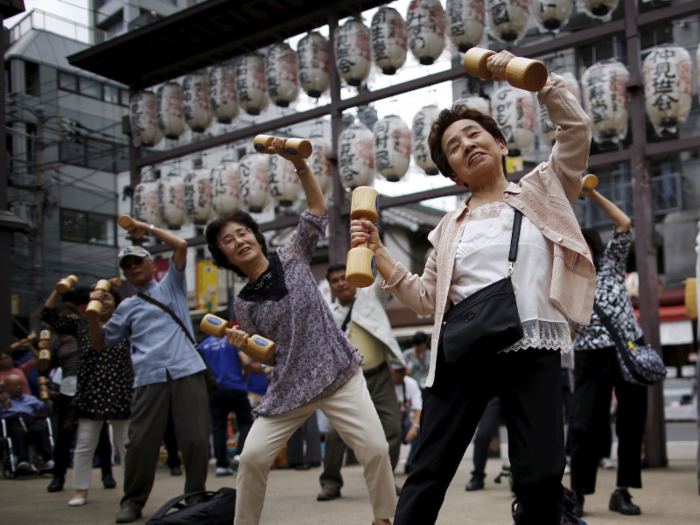
Similarly, breast cancer patients who exercise at least 3 to 5 hours each week have a higher 10-year survival rate and are less likely to die from any cause.
There's also some evidence that regular exercise can slow prostate tumor growth, at least in rats.
Remember: Exercise doesn't have to be done at expensive studios or even in special clothes.
"Everything counts!" Dr. Monique Tello wrote in a Harvard Health blog post in January. "Walking, gardening, taking the stairs, dancing around, cleaning house. Exercise does not have to be at the gym. Avoiding long periods of time sitting is key. So, sit less, move more."
Another key way to keep our cells healthy and reduce the risk of cancer is to adopt a good diet. Enjoy fiber-packed foods like whole grains, beans, peas, and seeds.
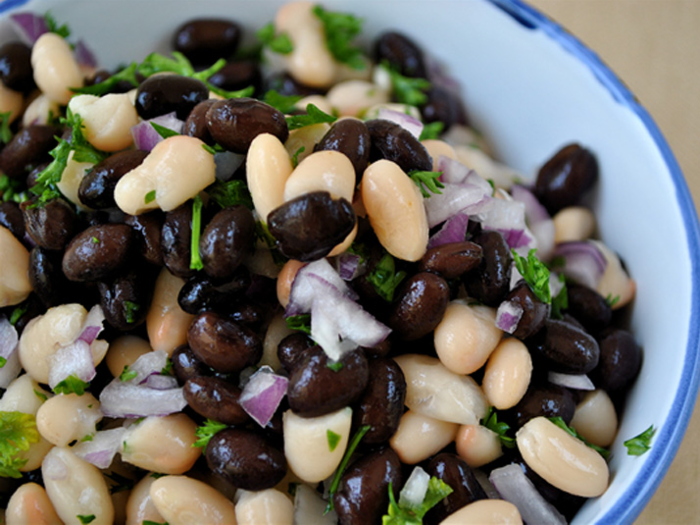
In addition to helping you stay full, these fibrous foods will reduce your risk of developing colon cancer and keep things running smoothly in your digestive system.
Hummus, chickpeas, and lentils are all great sources of fiber.
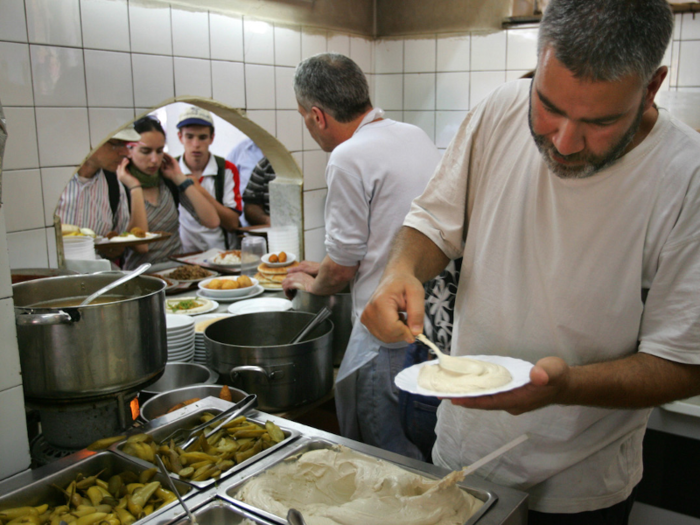
When it comes to cancer risk reduction, the zinc in these dishes is a zinger too: in the body, zinc finger proteins are crucial for healthy DNA. Many Americans don't get enough zinc in their diets.
Whole fruits are a great source of fiber too, as long as they're not pulverized to smithereens in smoothies. Fruits like lemons, limes, strawberries, and raspberries are also great sources of vitamin C.
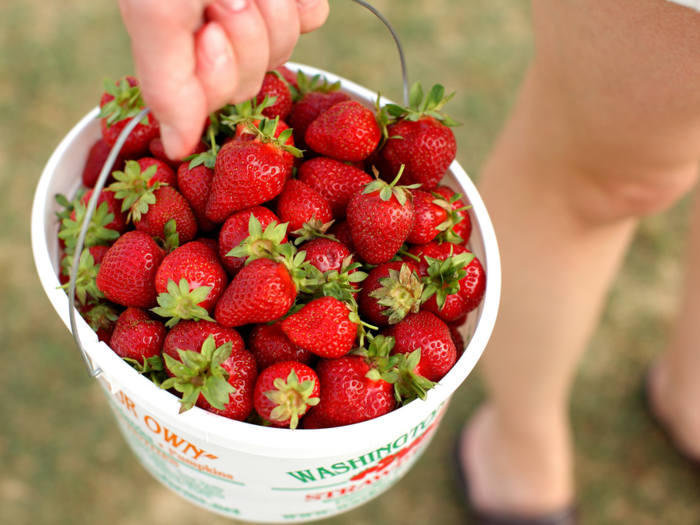
Scientists have known for decades that people who eat more vitamin C-rich fruit have a lower risk of developing all kinds of cancers.
This is especially true for cancers of the esophagus, larynx, oral cavity, pancreas, stomach, rectum, breast, and cervix.
In general, it's best to get vitamins from real food, not supplements; studies suggest there's something special about the way the compounds, acids, and vitamins work together in fruit that's more beneficial for you than taking a pill.
Generally speaking, it's great to eat plants. They contain beneficial phytochemicals, which are what gives plants bright colors, odors, and flavors. In our bodies, phytochemicals help defend us against disease.

Phytochemicals reduce inflammation, which has the potential to make cancer more likely. Plus, they act like ingestible body guards, keeping the things we eat, drink, and breathe from becoming carcinogens, as well as preventing and repairing DNA damage.
One great phytochemical is beta carotene, which pops up in orange and yellow produce items like carrots and sweet potatoes.
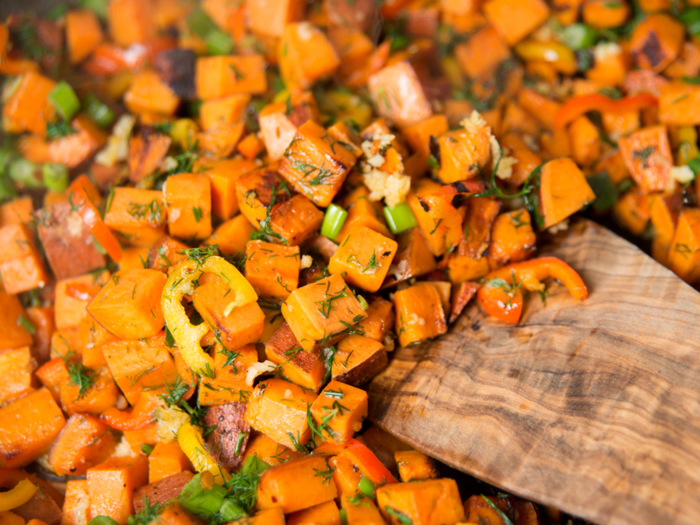
People who eat a beta carotene-rich diet have lower instances of cervical cancer and slight reductions in breast cancer risk. In some studies, beta carotene has been shown to slow down and even kill cancer cells.
But beta carotene supplements should be avoided, as they can actually do more harm than good when it comes to cancer treatment and prevention.
Leafy greens are also beta-carotene powerhouses, and they contain other beneficial carotenoid phytochemicals, too. It's well known guidance at this point, but it's true: Spinach and kale are excellent health foods.

People who eat carotenoid-rich foods like spinach, kale, collard greens, and sweet potatoes can convert the chemicals in those plants into nutrients like vitamin A.
Vitamin A is essential for developing healthy embryos, keeping tissues healthy, and ensuring the immune system functions properly. Again, it's best to eat foods rich in vitamin A and shy away from supplements, since those can lead to liver problems.
Carotenoids are best absorbed by the body when eaten along with some fat in a meal.
Broccoli and other crunchy, cruciferous veggies like Brussels sprouts, cauliflower, and cabbage are also great anti-cancer tools.
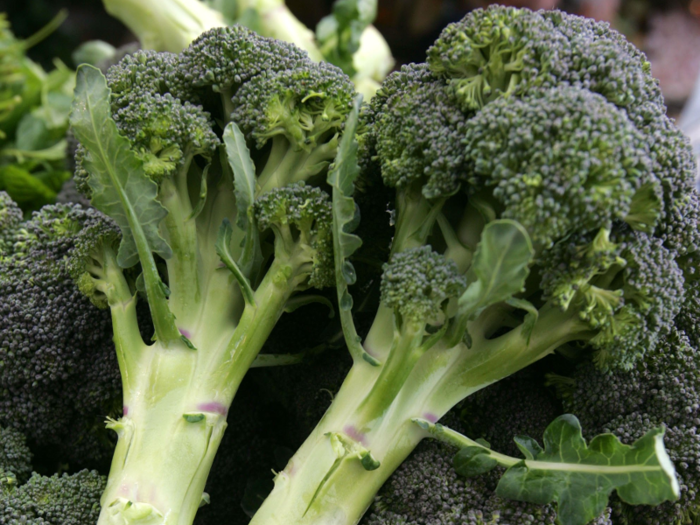
When we chew and digest these vegetables, they perform some impressive feats of cancer risk reduction.
"They have been found to be helpful in fighting breast cancer, lung cancer, prostate cancers, colorectal cancer," Ocean Robbins, a healthy-eating evangelist and the grandson of Baskin-Robbins co-founder Irvine Robbins, recently told Business Insider.
He added, "they've got certain components that can actually help to protect you from free radicals that might damage your cells' DNA."
Lycopene is another wonderful carotenoid. Tomatoes, watermelons, guavas, and pink grapefruits all have it.
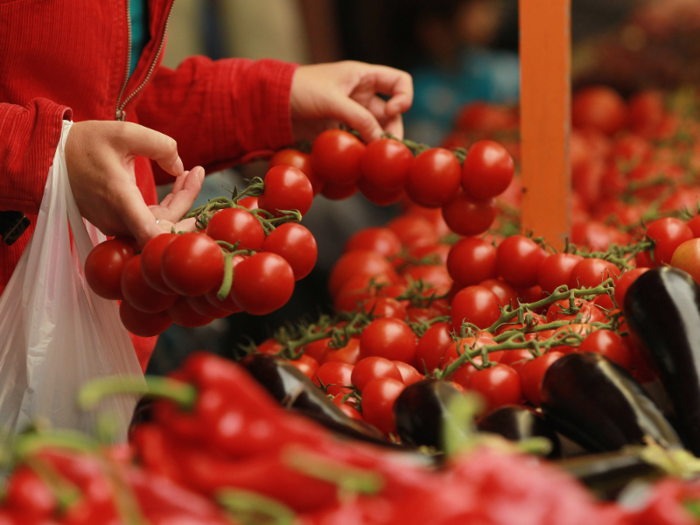
Studies suggest that eating lycopene-rich fruits and vegetables, which are generally reddish or pinkish, reduces a person's risk of developing lung, stomach, prostate, and breast cancers. There's a chance that it could also help provide some protection against sunburns — which can up a person's odds of developing skin cancer — but more research is needed.
Celery is a promising anti-cancer food, too.
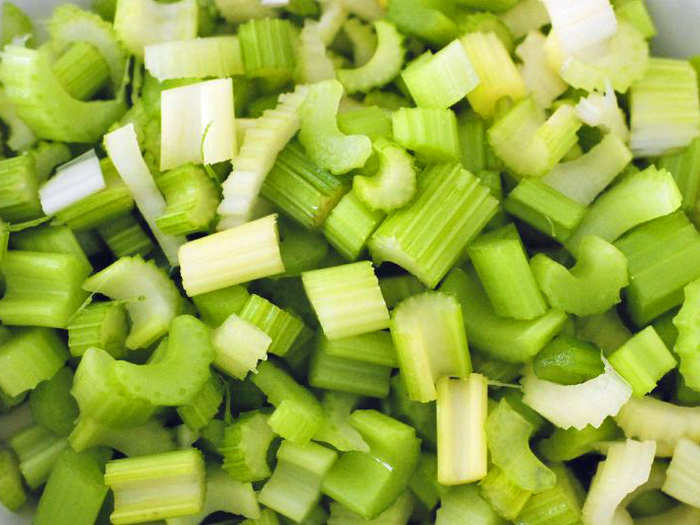
Studies have shown that apigenin, a pigment chemical found in celery (as well as parsley and chamomile), can help lower one's risk of some cancers, including lung cancer.
In addition to reducing inflammation and helping with constipation, eating celery can help the body kill cancer cells.
Beneficial phytonutrients are not limited to fruits and veggies. They're also found in grains and nuts.
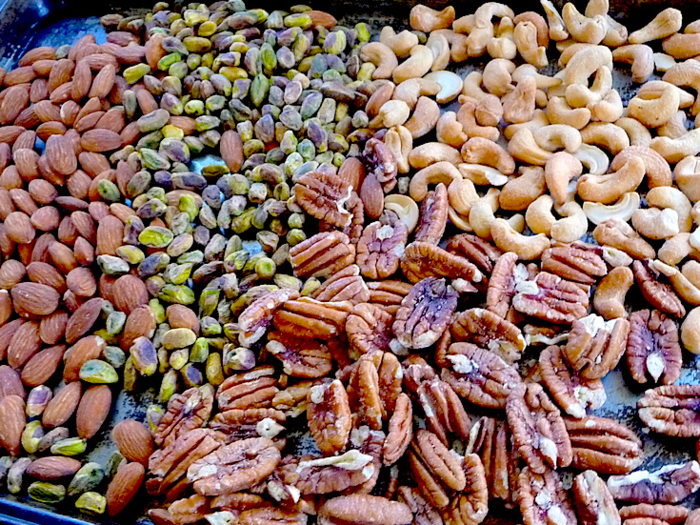
One study of more than 75,000 women in the US found that those who said they consumed more than two ounces of nuts per week had a lower risk of developing pancreatic cancer than women who rarely (if ever) opted for nutty snacks.
Some nuts appear to be more potent than others, though.
For example, Brazil nuts contain a hefty dose of selenium and show promise at reducing people's risk of cervical and prostate cancers. Eating just two Brazil nuts per day may provide a boost.
Another tip for reducing cancer risk: Eat iodine-rich foods, which help regulate our hormones. Some good dietary sources of iodine are cheese and yogurt.

Iodine is an essential mineral: The body uses it to make thyroid hormones, which help control our metabolism. Studies suggest that having too much or too little iodine in your system can play a role in tumor growth.
Fish like cod and tuna, as well as shrimp, seaweed, milk, yogurt, and cheese all have a good amount of iodine in them. Iodized salt also works, but prepacked foods often don't use it, so it's easier to work into meals when you cook at home.
Tuna and other fish are rich in omega-3 fatty acids, which are great anti-inflammatory aids for the body. But when it comes to cancer prevention, any link between omega-3s and lower cancer risk is still unclear.

Omega-3s show some promise for reducing one's risk of breast cancer and colon cancer. But high concentrations of omega-3s in the blood are associated with an increased risk of prostate cancer, suggesting moderation is key.
Still, the essential fatty acids are great at cellular repair and can reduce the amount of fat in our blood, making them a positive diet addition if you're trying to keep your heart healthy and waist trim.
Incorporating fatty fish like salmon, albacore tuna, and sardines as well as nuts like walnuts into your diet a few times a week is a simple way to get enough omega-3s.
Adding some turmeric into your diet is an anti-cancer strategy backed by centuries of cooks.
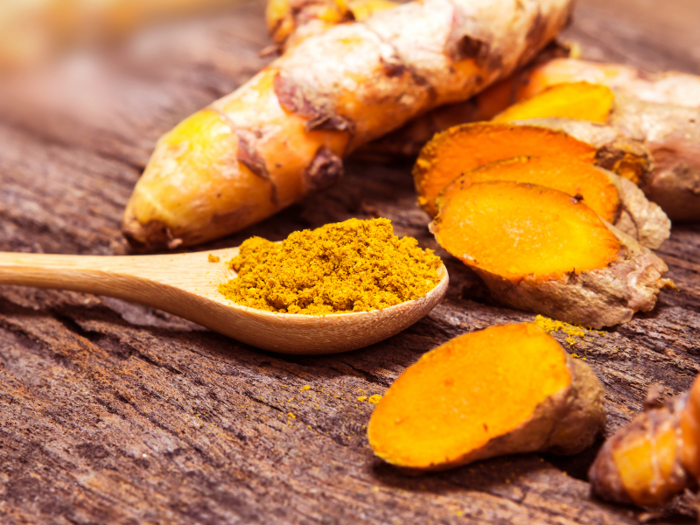
The bright yellow root is a favorite addition to curries and golden milks served around the world. But it's not just a flavor enhancer.
"It's probably, to the best of my knowledge, the most potent naturally occurring anti-inflammatory," Ajay Goel, a biophysicist who researches cancer, recently told Business Insider.
Turmeric has the potential to break up tumors, reduce inflammation, and nix free radicals in the body that damage our cells.
Some of Goel's studies in animals and humans suggest that curcumin — the chemical compound in turmeric — can also help kill treatment-resistant cancer cells and might make some cancers less resistant to chemotherapy. In some instances, patients can reduce their toxic chemotherapy doses as much as tenfold simply by coupling their treatment with curcumin.
Mushrooms are an earthy tool that may reduce one's risk of breast cancer. Studies suggest just one per day can help.

Like Brazil nuts, mushrooms are a good source of selenium. Observational studies of Chinese people suggest that eating just one mushroom a day can help reduce a person's cancer risk, and mushrooms have been safely and effectively used alongside radiation and chemotherapy for three decades in Japan and China.
Scientists still want to know more about how mushrooms work in the body, but the evidence from observational data is compelling.
Enjoy a daily cup of joe if that’s your thing.

Drinking a daily brew can make some of us better co-workers (and more pleasant people to be around). But coffee drinking may actually lower your risk of developing certain kinds of cancer too, including endometrial (uterus), prostate, liver, mouth, throat, and breast.
If coffee's not your jam, perhaps you enjoy green tea. Scientists are zeroing in on the tea's potential to kill tumor cells.
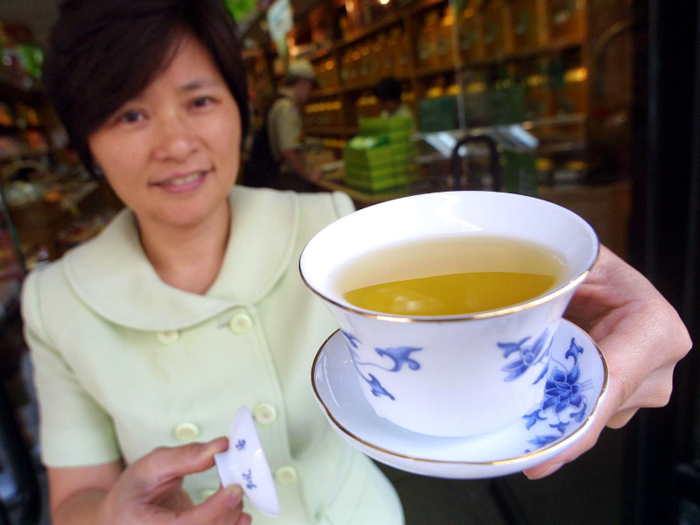
More research is needed on this as well, but some compelling evidence suggest the plant chemical compounds (polyphenols) in green tea might mess up the way cancer cells like to divide and multiply, and slow down blood vessel formation around tumors.
Some plastic containers can degrade over time and leach chemicals into our food that mess with how our hormones operate. Opt for glass and stainless steel containers instead.
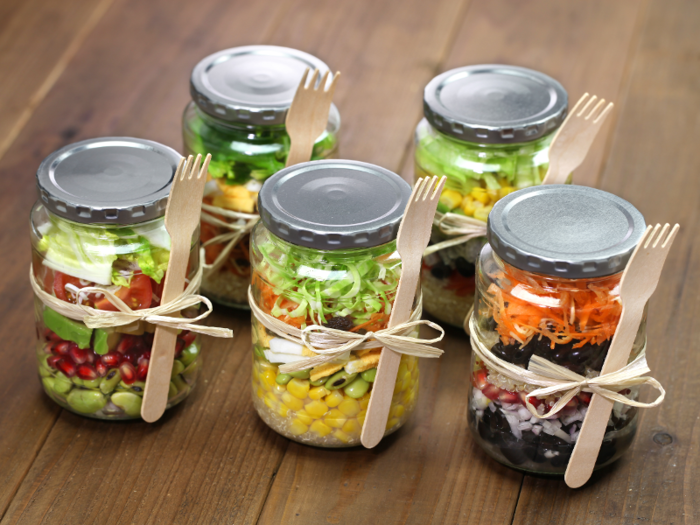
Phthalates are chemicals that make plastics more flexible and durable. They appear in raincoats, flooring, hair spray, nail polish, plastic food packaging, and toys.
More research on the health impacts of these chemicals is needed, but some evidence suggest they can lead to premature births, and the US government says at least one phthalate (Di-ethylhexyl phthalate, or DEHP) "can cause cancer."
New moms can reduce their own cancer risk, and that of their newborn, by sticking to breastfeeding for the first few months.

With very few exceptions, a mother’s milk has everything babies need for the first months of life.
"Breast milk is really a living substance," Dr. Joan Younger Meek, chair of the American Academy of Pediatrics Section on Breastfeeding, recently told Business Insider. "It has whole cells. It's not something that you can pour out of a can."
Breastfed kids are less likely to develop childhood cancers such as leukemia and lymphoma, and breastfed babies are less likely to become overweight or obese, which is also a cancer risk.
Breastfeeding can also help mothers reduce their own risk of developing breast and ovarian cancers.
There are also some foods to cut back on if you want to reduce your cancer risk. Red meat is one.

Red meat has a compound in it called "haem" or heme protein, which is what makes it red. Unfortunately, haem can damage our intestinal lining.
If you love steak or pork, try eating just a little less and "beefing" up your red-meat dishes with other savory foods like mushrooms or beans.
Processed types of meat like hot dogs, cured sausages, and bacon appear to be especially risky.

Research suggests processed meats are more damning than other types of red meat.
Science has shown that eating larger quantities of meat that has been salted, cured, or smoked, — like ham, sausage, bacon, and hot dogs — can cause stomach and bowel cancers. That is largely because processed meats are treated with nitrates: chemical additions that help keep the color of the meat pink and the flavor tasty and salty. That can even be true of so-called "nitrate free" varieties of processed meat.
This may be part of the reason why colon and rectal cancer rates are soaring in people ages 20 to 49 right now. Researchers still aren't sure why this group is developing bowel cancer at double the rate seen just three decades ago, but they think diet could play a role.
Of course, a single slice of bacon isn't going to kill you. But to reduce one's cancer risk, it's important to be aware of the food choices we make.
Grilling meat at high heats can give rise to cancer-causing compounds, but marinating it first may help.
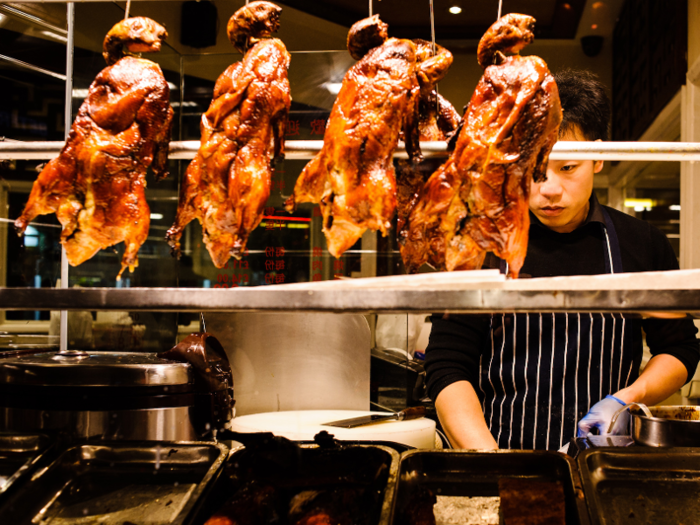
The cancer-causing compounds that arise when you grilling meat at high heats are called heterocyclic amines (HCAs). Doing less grilling can reduce your exposure.
But research from Kansas State University found that marinating meats in spices like rosemary, thyme, oregano, and sage doesn’t just boost flavors — it can cut down HCAs in a piece of meat by 87%.
Nix sugar where you can.

Eating too many sweets can damage your cells and increase your risk of developing cancer. Sugar may also fuel more aggressive tumor growth in the body, since cancer loves to use sugar as fuel.
Sugar also contributes to weight gain, which increases our odds of developing cancer in the first place. Because sugar hides everywhere in our diets, from yogurt to salad dressing, preparing more of your own food can help you better control your sugar intake.
Drink less. If you enjoy alcohol, consume it in moderation.
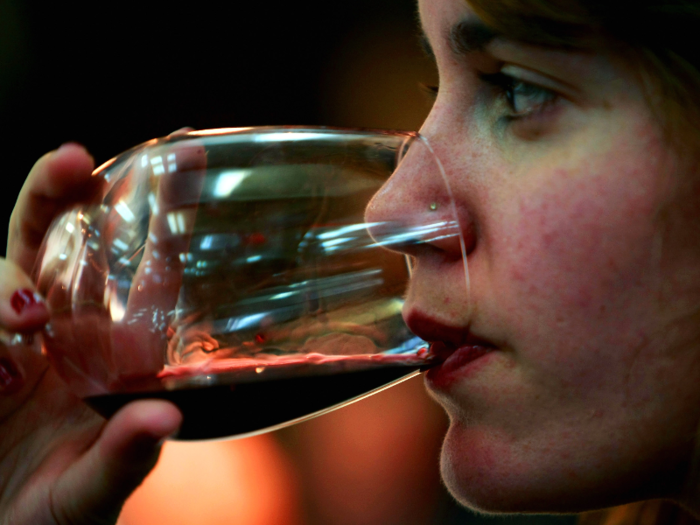
A 2018 analysis of nearly 600,000 drinkers in 19 high-income countries found that drinking more alcohol is associated with developing all kinds of cancers of the digestive system. Drinking can up your risk of developing mouth, throat, breast, stomach, colon, and liver cancers.
Part of the reason alcohol is dangerous is that it irritates tissues, making it easier for carcinogens to sneak in and cause DNA damage in the body.
According to the National Cancer Institute, "the more you drink, the higher your risk," so moderation is key.
New York Times personal health columnist Jane Brody wrote in 2017: “As a breast cancer survivor for 18 years, I remain an occasional drinker who has at most two drinks a week and often none.”
At home, avoid buying flame-resistant furniture, carpets, and clothing.

Brominated flame retardants — flame-stopping chemicals that are found in furniture, carpeting, clothing, and other products — can change the way our thyroid functions, shifting how the body processes fats and carbohydrates.
These so-called endocrine disruptors change how our hormones operate, and can contribute to all kinds of diseases, including cancers. Scientists are still learning how the chemicals work in our bodies, but if you're worried about your own exposure, opt for naturally flame-resistant fibers like wool, instead of chemically treated carpets, furniture, and clothes.
It's also a good idea to circulate plenty of fresh air through your home to help flush out toxic chemicals in dust and fabrics.
Take in some sunshine.

Although sunburns can damage DNA and lead to skin cancer, it's still important to get out and enjoy a sunny day. Studies show that people living at higher latitudes (where the sun doesn't always shine) are at greater risk of developing 15 different kinds of cancer than people who live closer to the equator and routinely get more sun. That list of cancers includes some of the most dangerous kinds, like breast, lung, lymphoma, pancreatic, and prostate.
A study of over 29,500 Swedish women in 2016 showed that those who get out and enjoy the sun regularly are less likely to die from all kinds of causes, including cancer.
But of course, wearing sunscreen is an obvious way to reduce your risk of skin cancer.
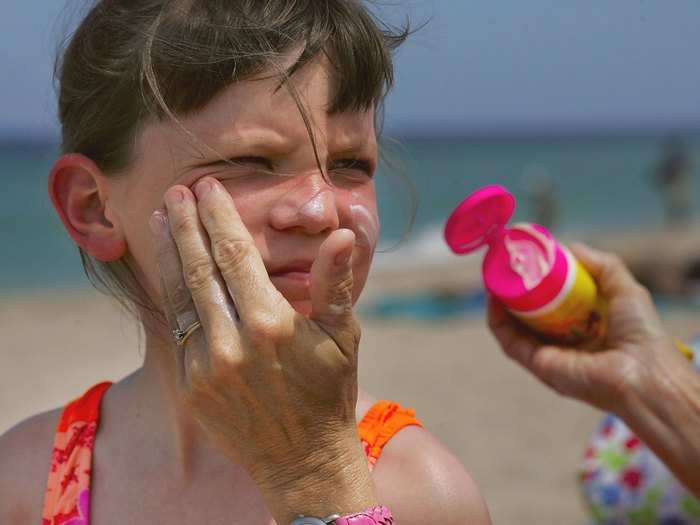
An SPF-30 cream gives enough of a shield for most people to fight off about 96% of the damaging, burn-inducing UVB rays at the beach. More sensitive and fairer-skinned folks may opt for an SPF-50 option, but skin expert David Leffell, chief of dermatologic surgery at Yale School of Medicine, told Business Insider that going any higher than 50 only offers "minimal" extra benefits.
Whichever sunscreen you pick, remember that SPF numbers only indicate the level of protection you can get for the first two hours after you apply a sunscreen.
Be mindful of harmful radiation you get indoors, too.
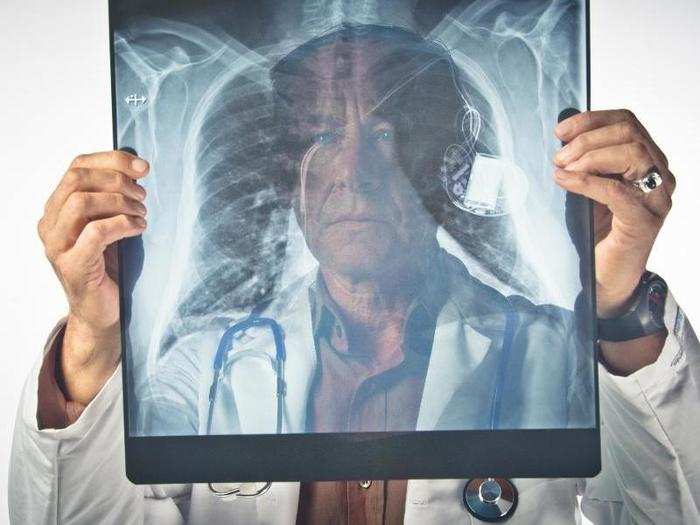
Radiation, whether from the sun's UV rays or x-rays and gamma rays, can cause cancer.
One x-ray isn't going to immediately give you cancer, of course. But doctors at Harvard Health suggest it's best to be careful about all forms of clinical radiation.
"Get medical imaging studies only when you need them," they wrote in a 2009 "10 commandments of cancer prevention" post. "Check your home for residential radon, which increases the risk of lung cancer."
Getting the HPV vaccine can also increase your chances of staying cancer-free.
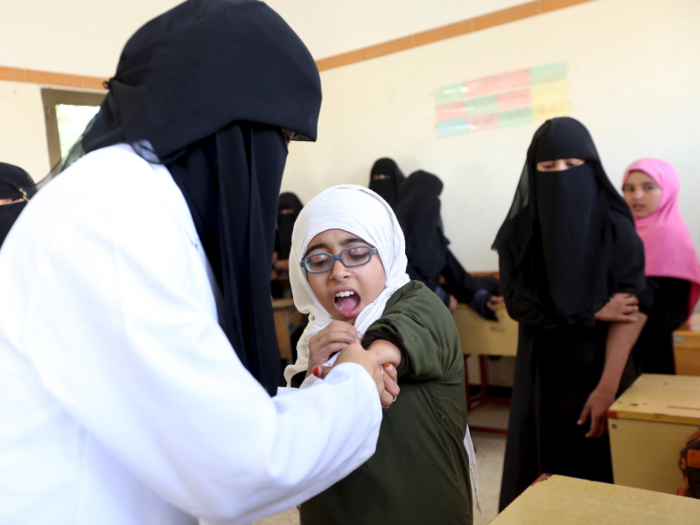
The HPV vaccine prevents people from catching some of the most rampant strains of the human papillomavirus, which is the most common sexually transmitted infection in the US. HPV also causes most cases of cervical cancer.
In 2015 alone, 43,371 new cases of HPV-associated cancer were reported across the US, including cervical, vulvar, and vaginal cancer in women, penile cancer in men, and anal cancer in both sexes.
The three-shot HPV vaccine course is recommended for young women between the ages of 11 and 26, and boys from 11 to 21 years old.
Getting the hepatitis B vaccine can also lower a person's odds of developing liver cancer.
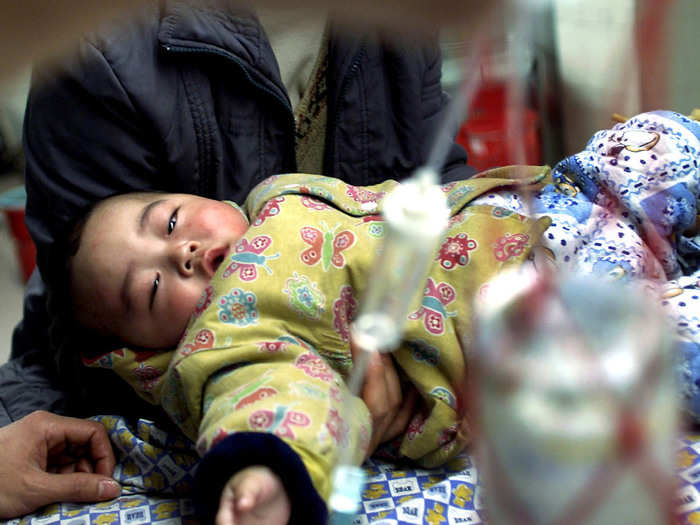
The hepatitis B vaccine is recommended for all babies, and it can reduce a person's chances of getting deadly liver cancers by preventing a lifelong hepatitis infection.
It’s important to remember that despite all the things we can do to reduce our risk of developing cancer, scientists still don't have a cure. It can be tough to know why some people get cancer and not others.

Fortunately, the simple tips on this list aren’t just useful for cancer prevention; they’re also ways to live a healthier life filled with colorful foods, strong lungs, and sunshine.
Scientists would also never suggest that simply eating certain foods or changing your lifestyle is an effective cancer treatment. In fact, studies show that opting out of medical treatments in favor of so-called "alternative" therapies leads patients to die more quickly.
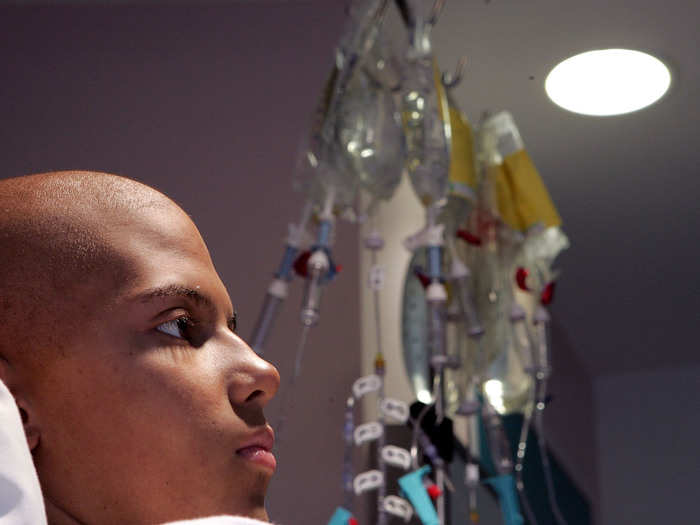
The items on this list are all about reducing the risk of cancer. But when it comes to getting rid of aggressive cancers that have already been found, radiation and chemotherapy are still two of the best tools we have.
A 2018 study of 1,290 cancer patients with early-stage breast, prostate, lung, or colorectal cancers reinforced this fact. The researchers discovered that patients who opted for alternative cancer treatments like herbs, supplements, and special diets were twice as likely to die because they were more likely to delay or refuse conventional treatments like chemotherapy, surgery, radiation, or hormone therapy. Those delays and refusals, in turn, led to higher death rates.
It's a harsh reminder that although healthy diets and exercise are good ways to prevent disease, treating cancer requires good clinical care.
Popular Right Now
Popular Keywords
Advertisement